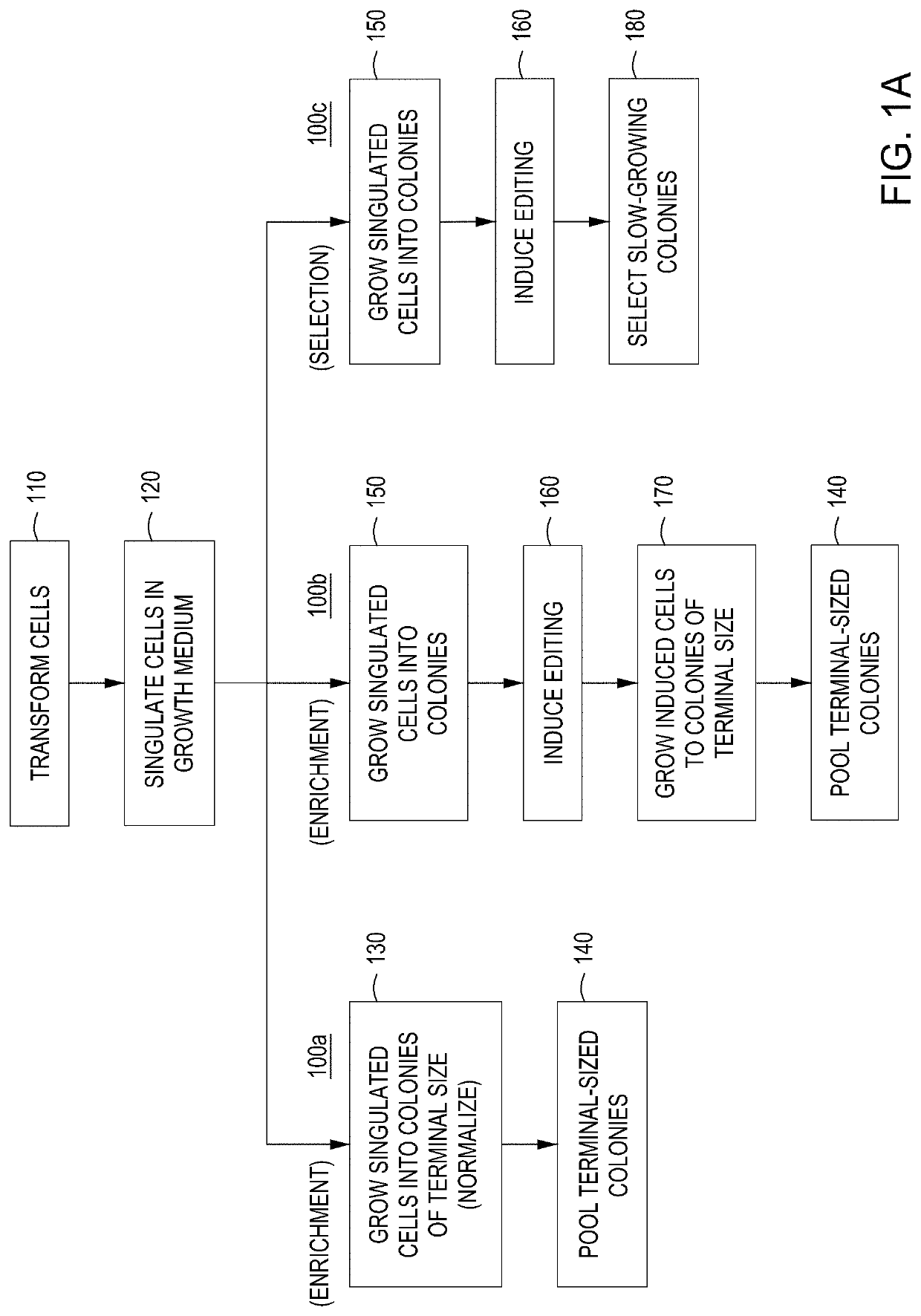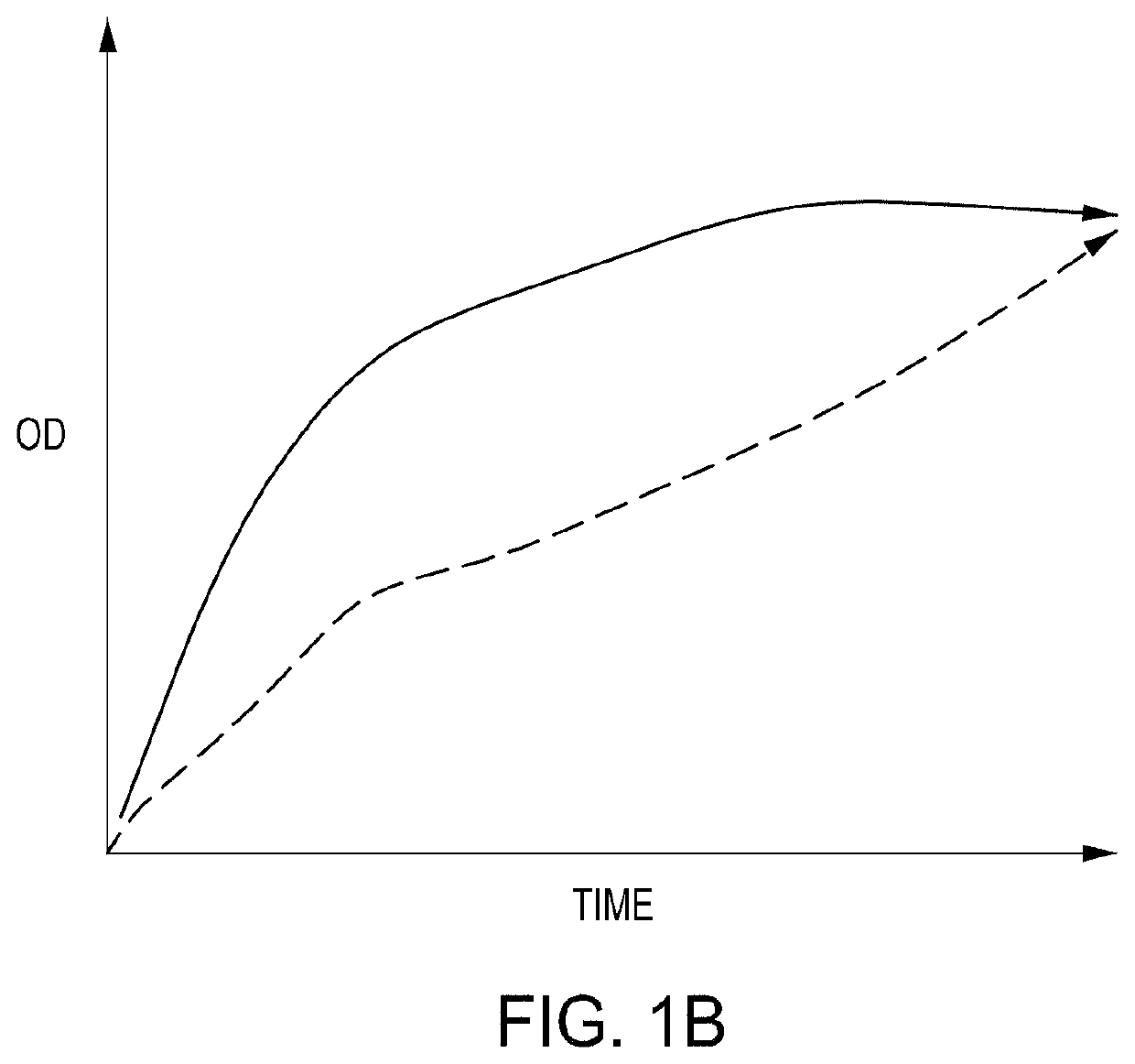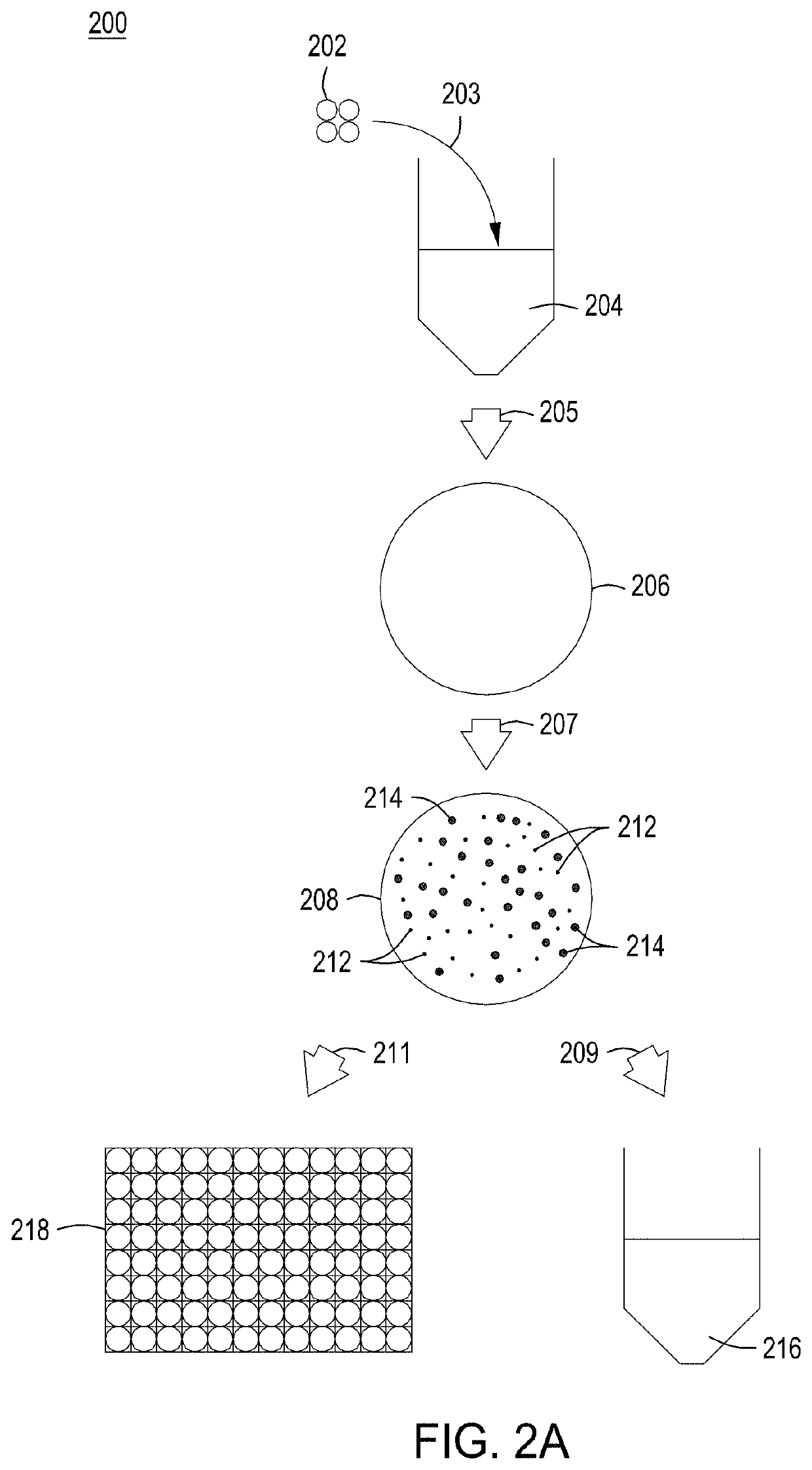Detection of nuclease edited sequences in automated modules and instruments
a technology of automated modules and sequences, applied in biochemistry apparatus and processes, laboratory glassware, tissue/virus culture apparatus, etc., can solve the problems of skewed representations of different edits in the population, high editing efficiency in cell populations, and difficulty in identifying edited cells in the background of unedited cells, so as to improve the observed editing efficiency, and double the observed editing efficiency
- Summary
- Abstract
- Description
- Claims
- Application Information
AI Technical Summary
Benefits of technology
Problems solved by technology
Method used
Image
Examples
example 1
t of Editing Cells by Growth Lag Identification
[0210]Transformation:
[0211]100 ng of the editing vector cloned library or Gibson Assembly® reaction was transformed by electroporation into 100 μL competent EC1 cells containing the engine vector. The electroporator was set to 2400 V in 2 mm cuvette. Following transformation, the cells were allowed to recover for 3 hours in SOB medium. A 10-fold dilution series of recovered cells (in H2O) was spot plated and the resulting CFU counts / dilution ratios were used to calculate transformation efficiency.
[0212]Plating and Colony Arraying:
[0213]100 μL of the appropriate dilution was plated on LB medium+25 μg / mL chlor and +arabinose and grown at 30° C. for 6-8 hours. Alternatively, the cells may be grown in liquid culture in LB medium+25 μg / mL chlor at 30° C. for 6-8 hours. The temperature of the plate was adjusted to 42° C. and the plates were incubated for two hours. The temperature was then adjusted back to 30° C. and the cells were allowed to...
example 2
Editing by Optical Density
[0216]FIG. 2C is a depiction of the growth profiles of randomly-picked variants from a silent PAM mutation (SPM) library. This 500-member library targets regions located across the entire E. coli genome and integrated synonymous mutations that have no expected fitness effects. Colonies were picked from agar plates of uninduced transformed cells. Cells were picked from an agar plate and grown up in 200 μL LB+chlor / carb overnight in a 96-well microtiter plate format. 10 μL of the well content of the parent microtiter plate was then transferred to two replica daughter microtiter plates that received either no induction (top) or gRNA and nuclease induction (via the pL inducible promoter) for 1 hour at 42° C. (bottom). The well maps show the relative OD at 6 hours; the full growth curves are shown for reference. The replica wells represent growth observed from the same cassette design with or without gRNA induction. While the majority of the wells for the no-ind...
example 3
assette and Backbone Amplification and Assembly
[0217]Editing Cassette Preparation:
[0218]5 nM of oligonucleotides synthesized on a chip were amplified using Q5 polymerase in 50 μL volumes. The PCR conditions were 95° C. for 1 minute; 8 rounds of 95° C. for 30 seconds / 60° C. for 30 seconds / 72° C. for 2.5 minutes; with a final hold at 72° C. for 5 minutes. Following amplification, the PCR products were subjected to SPRI cleanup, where 30 μL SPRI mix was added to the 50 μL PCR reactions and incubated for 2 minutes. The tubes were subjected to a magnetic field for 2 minutes, the liquid was removed, and the beads were washed 2× with 80% ethanol, allowing 1 minute between washes. After the final wash, the beads were allowed to dry for 2 minutes, 50 μL 0.5×TE pH 8.0 was added to the tubes, and the beads were vortexed to mix. The slurry was incubated at room temperature for 2 minutes, then subjected to the magnetic field for 2 minutes. The eluate was removed and the DNA quantified.
[0219]Foll...
PUM
| Property | Measurement | Unit |
|---|---|---|
| volume | aaaaa | aaaaa |
| volume | aaaaa | aaaaa |
| volume | aaaaa | aaaaa |
Abstract
Description
Claims
Application Information
 Login to View More
Login to View More - R&D
- Intellectual Property
- Life Sciences
- Materials
- Tech Scout
- Unparalleled Data Quality
- Higher Quality Content
- 60% Fewer Hallucinations
Browse by: Latest US Patents, China's latest patents, Technical Efficacy Thesaurus, Application Domain, Technology Topic, Popular Technical Reports.
© 2025 PatSnap. All rights reserved.Legal|Privacy policy|Modern Slavery Act Transparency Statement|Sitemap|About US| Contact US: help@patsnap.com



